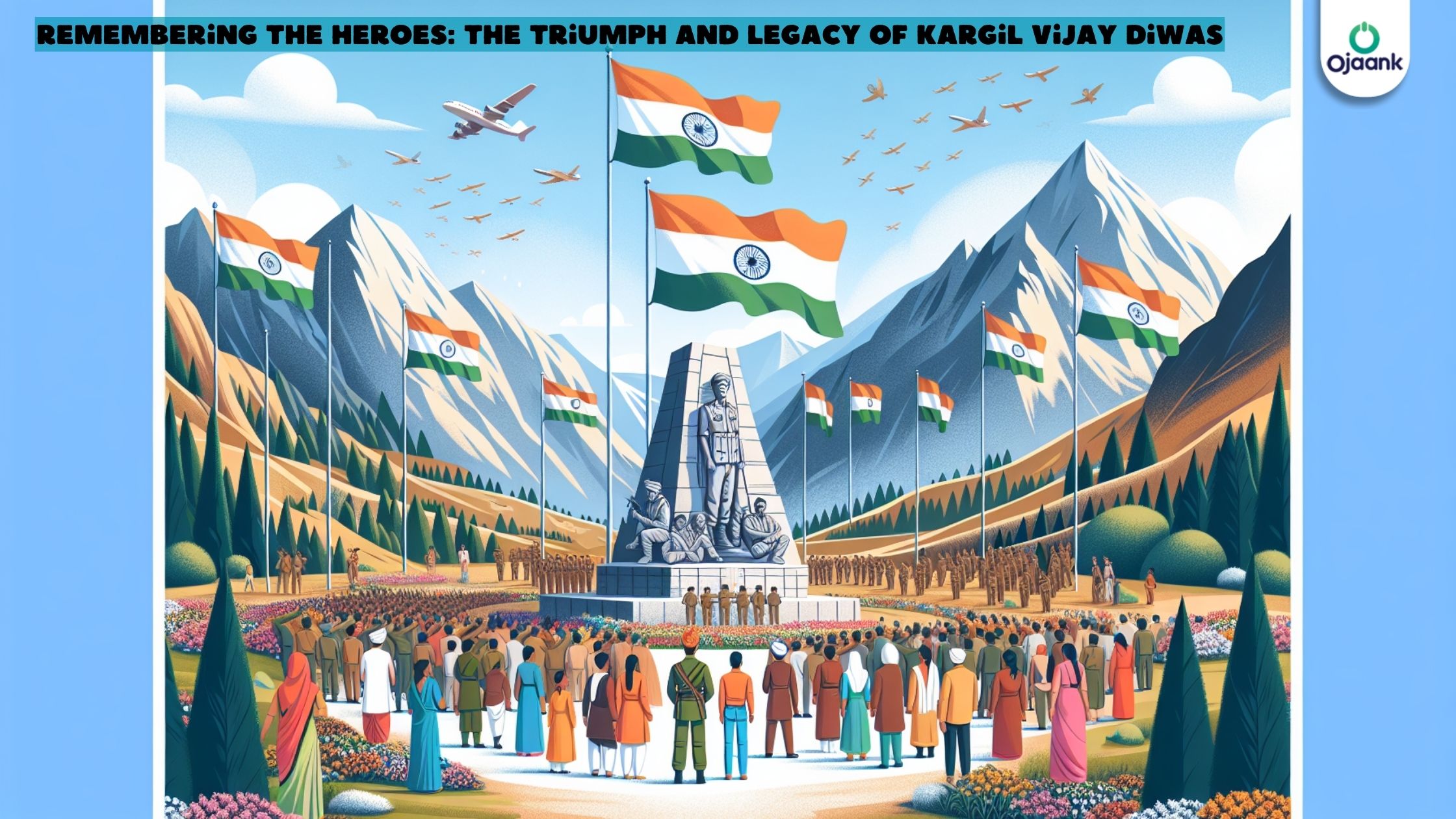Kargil Vijay Diwas

Remembering the Heroes: The Triumph and Legacy of Kargil Vijay Diwas
The Origins of the Kargil Conflict
Historical context of India-Pakistan relations
India and Pakistan have had a complex relationship since their partition in 1947. The two nations have engaged in multiple conflicts, with Kashmir being a major point of contention.
Strategic importance of the Kargil region
Kargil, located in the Ladakh region, holds significant strategic value due to its proximity to the Line of Control (LoC) and its role in connecting Ladakh to the Kashmir Valley.
Events leading to the infiltration
In early 1999, Pakistani forces and militants crossed the LoC and occupied strategic positions in the Kargil sector, aiming to cut off the vital Srinagar-Leh highway.
Operation Vijay: India's Response
Initial discovery of the infiltration
Indian patrols first detected the intrusion in May 1999, leading to a swift response from the Indian military.
Mobilization of Indian armed forces
The Indian Army, Air Force, and Navy were quickly mobilized to counter the threat and reclaim the occupied territories.
Key military strategies employed
India adopted a multi-pronged approach, combining ground assaults with air support to dislodge the intruders from their high-altitude positions.
The Battle Unfolds
Major combat operations and key battles
The conflict saw intense fighting across various sectors, including Tiger Hill, Tololing, and Point 5140, which became symbols of Indian valor.
Challenges faced by Indian soldiers
Indian troops faced extreme weather conditions, treacherous terrain, and well-entrenched enemy positions at altitudes exceeding 5,000 meters.
Role of air support in the conflict
The Indian Air Force played a crucial role in providing close air support and conducting precision strikes on enemy positions.
Heroes of Kargil
Notable acts of bravery
The Kargil War witnessed numerous acts of extraordinary courage, with many soldiers going beyond the call of duty to secure victory.
Profiles of decorated soldiers
Many soldiers received gallantry awards, including Captain Vikram Batra and Grenadier Yogendra Singh Yadav, who were awarded the Param Vir Chakra.
Stories of sacrifice and resilience
The conflict saw countless tales of sacrifice, with soldiers laying down their lives to protect the nation's integrity.
Diplomatic and International Aspects
Global reaction to the conflict
The international community largely supported India's position, urging Pakistan to withdraw its forces from the Indian side of the LoC.
Role of international mediation
Countries like the United States played a significant role in diplomatic efforts to de-escalate the situation.
Impact on India-Pakistan relations
The Kargil conflict further strained the already tense relations between India and Pakistan, leading to increased mistrust and suspicion.
The Aftermath and Victory
Recapture of strategic points
By July 26, 1999, Indian forces successfully recaptured all the intruded positions, marking a decisive victory.
Ceasefire and withdrawal of Pakistani forces
Following international pressure, Pakistan withdrew its remaining troops, and a ceasefire was declared.
Declaration of victory and its significance
The successful conclusion of Operation Vijay reaffirmed India's military capabilities and resolve to protect its territorial integrity.
Commemorating Kargil Vijay Diwas
Establishment of the annual observance
July 26 is now observed annually as Kargil Vijay Diwas to honor the sacrifices and valor of Indian soldiers.
National celebrations and ceremonies
The day is marked by wreath-laying ceremonies, patriotic events, and tributes to the fallen heroes across the country.
Educational initiatives to honor the martyrs
Various programs and exhibitions are organized to educate younger generations about the significance of the Kargil victory.
Lessons Learned and Military Reforms
Review of India's security measures
The Kargil conflict prompted a comprehensive review of India's security infrastructure and intelligence gathering capabilities.
Technological and strategic improvements
The war led to significant modernization efforts in the Indian armed forces, including enhanced surveillance and communication systems.
Enhanced border surveillance and management
India strengthened its border management practices, implementing advanced monitoring technologies and increasing troop presence in sensitive areas.
Impact on Indian Society and Culture
Surge in patriotism and national unity
The Kargil War united the nation, inspiring a wave of patriotism and support for the armed forces.
Representation in media and popular culture
The conflict has been depicted in various films, books, and documentaries, keeping the memory of the war alive in public consciousness.
Support systems for veterans and families of martyrs
The government and various organizations have established support mechanisms for Kargil veterans and the families of fallen soldiers.
Kargil's Legacy: 20 Years and Beyond
Long-term effects on regional geopolitics
The Kargil War significantly influenced India's strategic thinking and its approach to regional security challenges.
Continued importance in India's military history
The conflict remains a crucial chapter in India's military history, shaping defense policies and strategic doctrines.
Evolving significance for younger generations
As time passes, efforts continue to ensure that the sacrifices made during the Kargil War are remembered and honored by future generations.
Summary
The Kargil War stands as a testament to the bravery and resilience of Indian armed forces. It not only secured India's territorial integrity but also left a lasting impact on the nation's military preparedness and social fabric. Kargil Vijay Diwas serves as an annual reminder of the sacrifices made and the importance of remaining vigilant in safeguarding our borders.
Frequently Asked Questions (FAQs)
-
When is Kargil Vijay Diwas celebrated?
Kargil Vijay Diwas is celebrated on July 26 every year.
-
How long did the Kargil War last?
The Kargil War lasted approximately two months, from May to July 1999.
-
What was the outcome of the Kargil War?
India successfully recaptured all occupied positions and forced the withdrawal of Pakistani forces.
-
How many Indian soldiers lost their lives in the Kargil War?
Over 500 Indian soldiers were martyred during the conflict.
-
What is the significance of Tiger Hill in the Kargil War?
Tiger Hill was a strategically important peak that became a symbol of the Indian Army's determination and victory in the war.